From North to South, Vietnam is blessed with magnificent natural landscapes, among which are the majestic and imposing mountain ranges. These mountains are not only symbols of magnificent natural beauty but also contain historical, cultural stories, and unforgettable travel experiences. Join “Du lịch khắp thế gian” (Travel the World) to discover the top famous mountains in Vietnam, where you can immerse yourself in nature, conquer challenges, and discover wonders.
1. Fansipan Peak – The Majestic Roof of Indochina
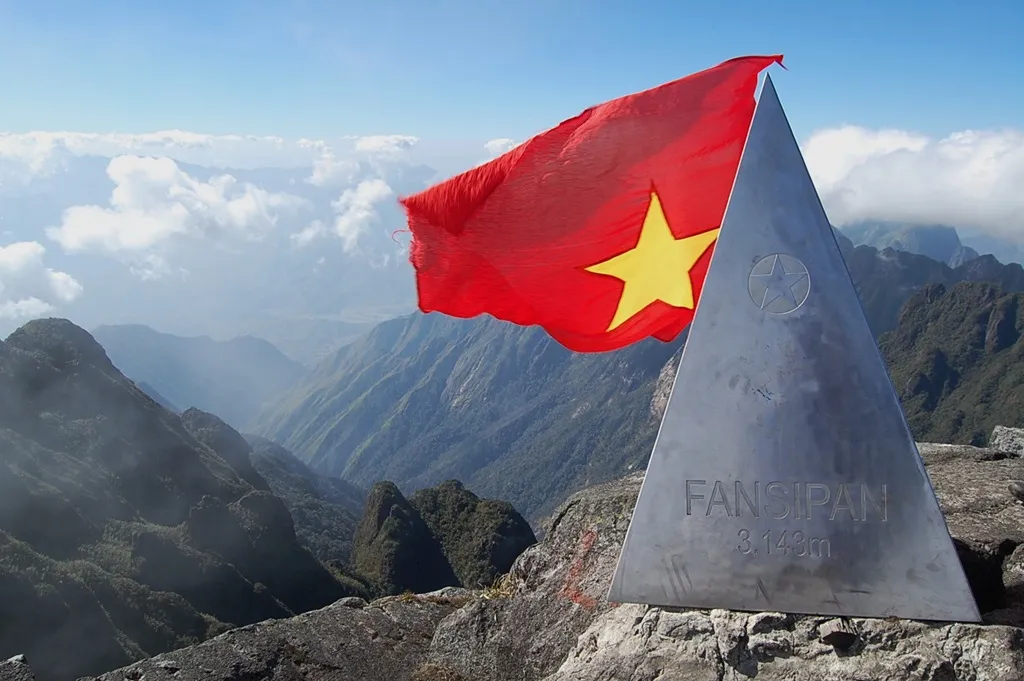
When mentioning famous mountains in Vietnam, Fansipan cannot be missed, the highest mountain in Indochina with an altitude of 3,143m. Located in the majestic Hoang Lien Son range, belonging to Lao Cai province, Fansipan has long been known as the “roof of Indochina,” a source of pride for Vietnamese people and a dream destination for many tourists. The name Fansipan, or “Hủa Xi Pan” in the local language, means “giant precarious rock slab,” partly describing the ruggedness and majesty of this mountain.
Previously, to conquer Fansipan peak, visitors often chose challenging hiking routes, crossing dense primeval forests, steep slopes, and floating seas of clouds. Popular routes usually start from Cat Cat village, Xin Chai village, or O Quy Ho pass, each route offering unique experiences and discoveries. The Cat Cat route is often chosen by many people due to its diverse scenery and climbing time of about 3-4 days and nights.
The Fansipan climbing journey is a fascinating and memorable experience. At the foot of the mountain, visitors will admire native plants such as jackfruit, cardamom, and bombax ceiba. The higher you climb, the more the landscape changes, giving way to primeval forests with tangled vines. At an altitude of over 2,000m, fog covers everything, creating a feeling of being lost in a fairyland. However, when you pass through the fog, the sky becomes clear again, the temperature drops sharply, bringing a characteristic chill of the highlands.
Today, conquering Fansipan has become easier than ever thanks to the modern Fansipan Legend cable car system. The cable car takes visitors over steep cliffs, shortening the travel time to the summit to only about 15-20 minutes. Sitting in the cable car cabin, visitors can admire the panoramic view of the poetic Muong Hoa valley, winding terraced fields, and the majestic Hoang Lien Son range.
On the top of Fansipan, visitors will be amazed by the magnificent spiritual architectural complex, built in the traditional Vietnamese pagoda architectural style. Works such as the Great Amitabha Buddha Statue, Bao An Thien Tu Pagoda, Bich Van Thien Tu Pagoda are not only spiritual destinations but also unique architectural works, harmonizing with the majestic natural landscape.
Coming to Fansipan, visitors not only conquer the peak but also experience the unique local culture, enjoy highland cuisine, and enjoy the fresh, cool air. Fansipan is truly a must-visit destination on the journey to explore the famous mountains of Vietnam.
2. Hong Linh Mountain – 99 Sacred Peaks
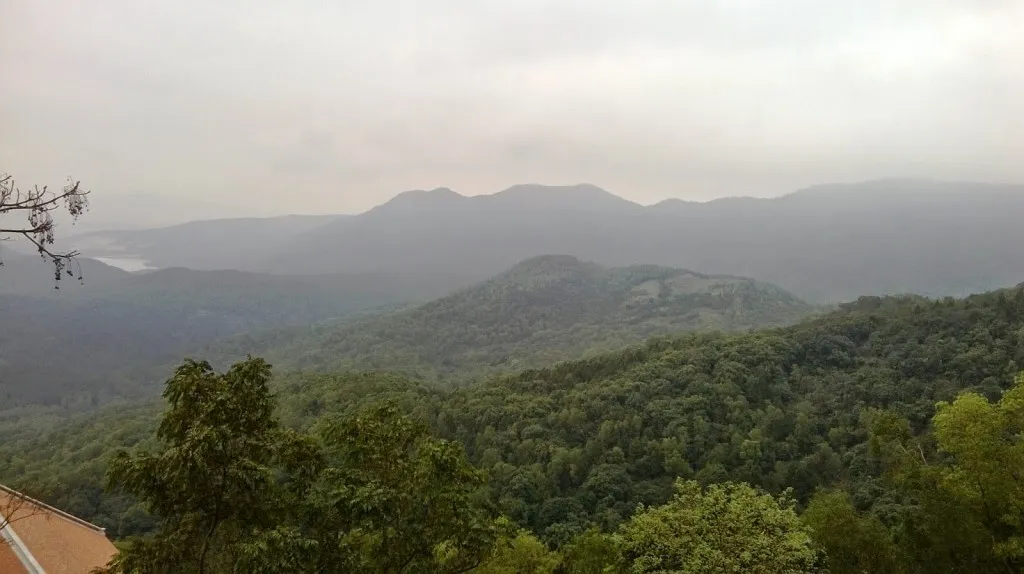
Hong Linh Mountain, a range with 99 peaks in Ha Tinh province, is not only famous for its natural beauty but also for its deep cultural and historical values. Hong Linh is considered a symbol of Ha Tinh land, associated with legends, historical relics, and ancient pagodas, temples, and shrines. The line “Hong Linh ơi, đỉnh cao mây vờn…” (Oh Hong Linh, the peaks are embraced by clouds…) in the song “Chào em cô gái Lam Hồng” (Hello to you, Lam Hong girl) has gone into people’s hearts, evoking a heroic historical period and the lyrical beauty of Hong Linh mountain.
Hong Linh Mountain is not a single mountain but a range with 99 peaks of different sizes, creating a majestic and diverse natural picture. With an average height of about 600-800m, Hong Linh is not as rugged as Fansipan, but still enough to bring exciting hiking experiences and beautiful natural scenery.
The special feature of Hong Linh mountain is the harmonious combination of natural beauty and spiritual cultural values. On the mountain, there are hundreds of ancient pagodas, temples, and shrines, each work carrying its own historical stories and legends. Huong Tich Pagoda, one of the oldest and most famous pagodas in Hong Linh, is associated with the legend of tiên (fairy) footprints on a rock. Chan Tien Pagoda is also an attractive spiritual destination, with legends about human and horse footprints on rocks, believed to be traces of fairies descending to earth. In addition, there are Thien Tuong Pagoda, Dai Tue Pagoda, and many other temples and shrines, creating a rich cultural relic complex on Hong Linh mountain.
Traveling to Hong Linh mountain is not only a journey to explore nature but also an opportunity to learn about the history, culture, and spirituality of Ha Tinh land. Visitors can climb mountains, visit pagodas and temples, learn about legends, and enjoy the peaceful and tranquil atmosphere of the mountains and forests. Hong Linh Mountain is truly a unique destination, combining ecotourism, cultural tourism, and spiritual tourism.
3. Bach Ma Mountain – “Da Lat of Central Vietnam”
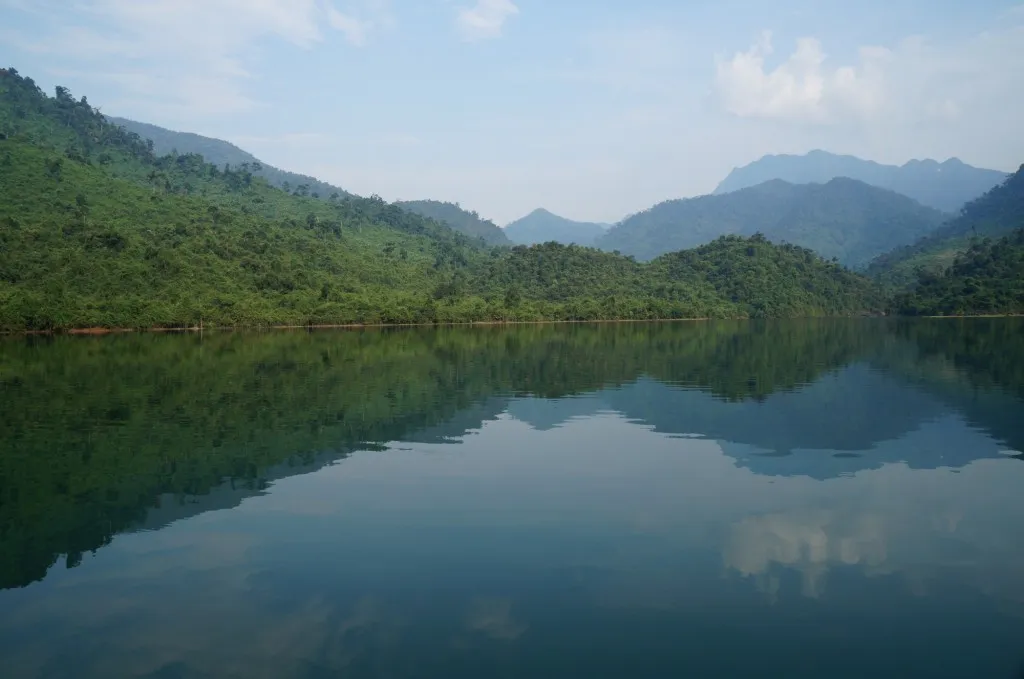
Bach Ma Mountain, located in Thua Thien Hue province, about 50km south of Hue city, is famous for its year-round cool climate, diverse natural landscapes, and rich ecosystem. With an altitude of over 1,500m, Bach Ma is likened to “Da Lat of Central Vietnam,” an ideal destination to escape the heat and immerse yourself in fresh nature.
Bach Ma National Park is an important highlight of the Bach Ma mountain area. With a large area and biodiversity, Bach Ma National Park is home to thousands of rare plant and animal species, many of which are listed in the Red Book of Vietnam and the world. The climate in Bach Ma is very special, winter temperatures do not drop below 4 degrees Celsius and summer temperatures do not exceed 26 degrees Celsius, creating ideal conditions for the development of a temperate ecosystem, similar to Sa Pa, Tam Dao, or Da Lat.
Exploring Bach Ma mountain, visitors can choose many different trails, each trail leading to unique and interesting attractions. The Tri Sao trail takes visitors to Tri Sao waterfall, where many star pheasants live. The Do Quyen waterfall trail is famous for the brilliant beauty of rhododendron flowers blooming in spring, creating huge flower carpets on the mountainside. The Ngu Ho trail leads to a system of 5 beautiful natural lakes in the mountains and forests. In particular, the Hai Vong Dai trail takes visitors to the mountain peak, where Hai Vong Dai (Sea Watching Tower) is located, an ancient architectural work, from which you can admire the panoramic view of majestic mountains and the vast East Sea.
In addition, Bach Ma also preserves traces of the French colonial period, with ancient villas nestled among green trees. Visitors can explore these relics and learn about the history of the area.
Bach Ma Mountain is not only an attractive ecotourism destination but also an ideal place to relax, unwind, and enjoy the fresh, cool air. With its unspoiled natural beauty, mild climate, and rich ecosystem, Bach Ma deserves to be one of the most famous and worth-visiting mountains in Vietnam.
4. Langbiang Mountain – Da Lat’s Love Legend
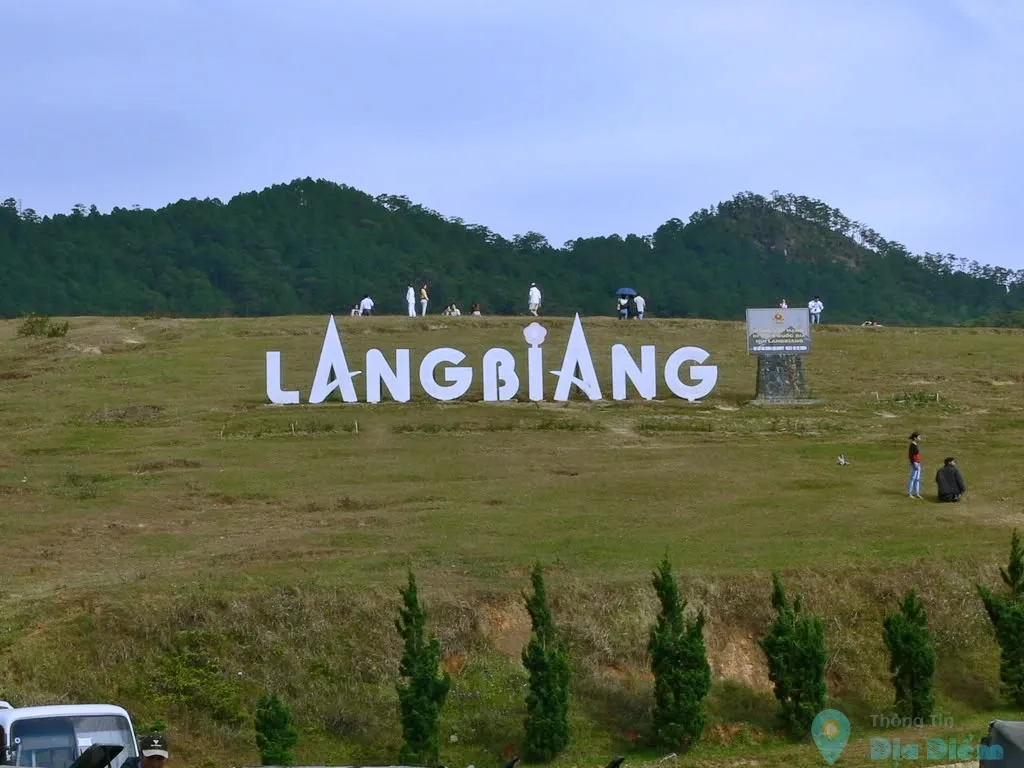
Langbiang Mountain, also known as Lam Vien Mountain, is located about 12km north of Da Lat city center, one of the famous tourist symbols of Da Lat. With an altitude of 2,163m, Langbiang is not only an attractive destination for mountaineering enthusiasts but also a place associated with a romantic and tragic love story between a man named Lang and a woman named Biang, hence the mountain is named Langbiang.
The name Langbiang originates from the touching love story between K’Lang, the son of a Lach tribe chief, and Hơbiang, the daughter of a Chil tribe chief. Overcoming differences in tribes and strict customs, they fell deeply in love. However, their love faced opposition from both tribes and ended with the tragic death of both. To commemorate the faithful love of Lang and Biang, the local people named this mountain Langbiang.
Langbiang Mountain is not only famous for its love story but also for its beautiful natural scenery and diverse tourist activities. Visitors can conquer Langbiang peak in many ways, from hiking, taking a jeep, or using the cable car service. Climbing Langbiang is an exciting experience, visitors will explore the diverse ecosystem of the mountains and forests, admire rare birds, and enjoy the fresh, cool air.
On the top of Langbiang, visitors will admire the panoramic view of dreamy Da Lat city, poetic Dankia-Suoi Vang lake, and green pine hills. This is also an ideal place for adventurous sports activities such as paragliding, and trekking. In addition, visitors can learn about the indigenous culture of the K’Ho people, enjoy local cuisine, and shop for unique handicrafts.
Langbiang is not just a mountain but also a cultural symbol, a diverse and attractive tourist destination of Da Lat. Coming to Langbiang, visitors will immerse themselves in nature, discover wonders, and feel the immortal love story.
5. Chua Chan Mountain – The Sacred Mountain of Dong Nai
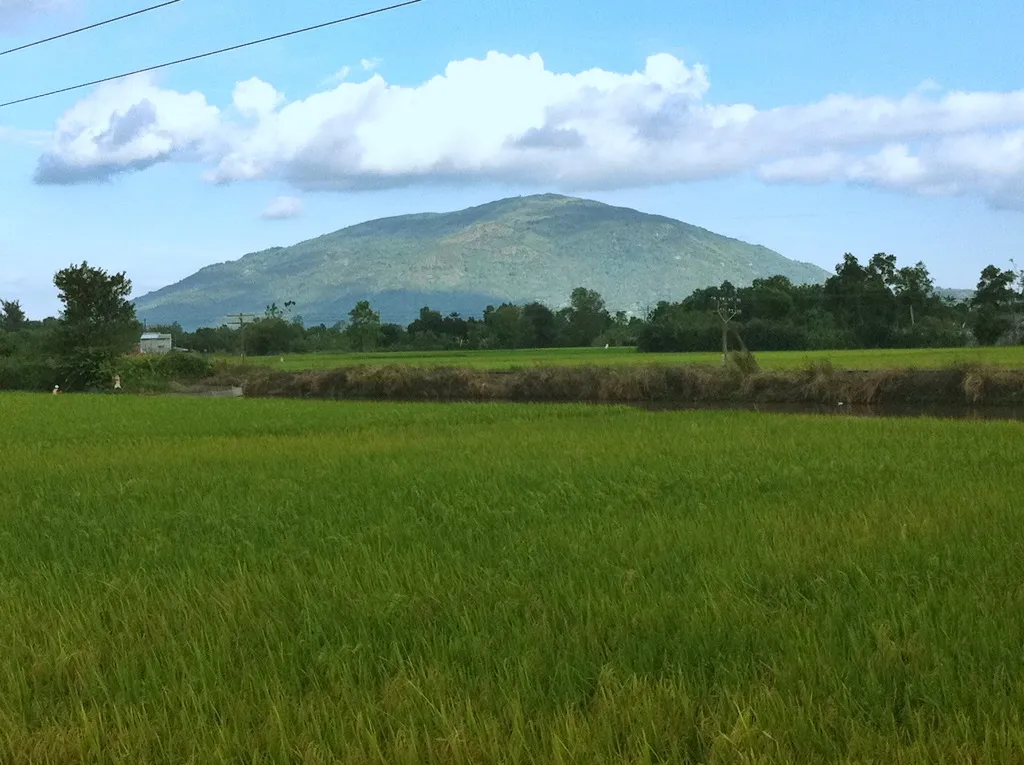
Chua Chan Mountain, also known as Gia Ray Mountain, belongs to Xuan Loc district, Dong Nai province, is the highest mountain in the Southeast region after Ba Den Mountain in Tay Ninh. With an altitude of 837m, Chua Chan is not only famous for its unspoiled natural beauty but also for its sacredness and mysterious stories surrounding the ancient Buu Quang Pagoda and the strange three-rooted banyan tree.
Chua Chan Mountain has a special shape like an inverted bowl, standing out in the vast plain of Dong Nai. In the early morning or late afternoon, the mountain peak is often covered by lazy white clouds, creating a poetic and magical scene.
The highlight of Chua Chan mountain is Buu Quang Pagoda, an ancient pagoda built in the early 20th century, located on the mountainside. Buu Quang Pagoda is famous for its unique architecture, the main hall is built in a natural cave, looking like a dragon’s mouth, creating a solemn and magnificent appearance. The entire architectural complex of the pagoda is built based on the natural terrain of the cave, harmonizing with the mountain and forest landscape.
In addition to Buu Quang Pagoda, Chua Chan mountain is also famous for the three-rooted banyan tree, an ancient banyan tree that is hundreds of years old, with three large roots clustered together creating a strange and unique shape. The three-rooted banyan tree is not only an attractive tourist attraction but also associated with many legends and mysterious stories, attracting a large number of tourists and locals to worship and pray.
Traveling to Chua Chan mountain is not only a journey to explore nature but also an opportunity to learn about spiritual culture and historical values of Dong Nai land. Visitors can climb mountains, visit pagodas, admire ancient banyan trees, and enjoy the fresh, peaceful atmosphere of the mountains and forests. Chua Chan Mountain is an ideal destination for those who want to seek tranquility, explore natural beauty, and learn about spiritual culture.
Conclusion
Vietnam not only has long beaches and vibrant cities but also possesses countless majestic mountains, each mountain carrying its own beauty, its own story, and unique travel experiences. From the majestic Fansipan peak, sacred Hong Linh mountain, poetic Bach Ma, romantic Langbiang to mysterious Chua Chan, the famous mountains of Vietnam always welcome visitors to explore and conquer. Plan your journey to discover the mountains of Vietnam today to enjoy memorable moments and experience the wonders that nature bestows.